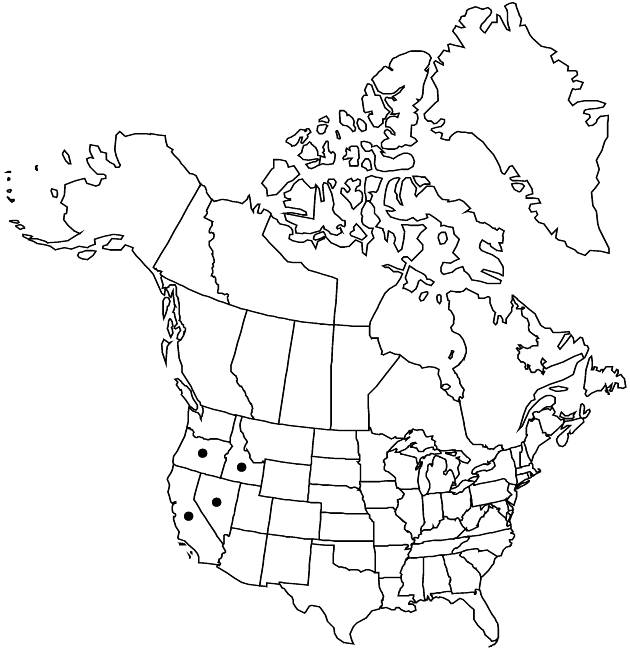Erigeron chrysopsidis var. austiniae
Phytologia 73: 198. 1992.
Endemic
Basionym: Erigeron austiniae Greene Erythea 3: 100. 1895 (as austinae)
Synonyms: Erigeron chrysopsidis subsp. austiniae (Greene) Cronquist
Treatment appears in FNA Volume 20. Treatment on page 287.
Revision as of 22:00, 29 July 2020 by imported>Volume Importer
Stems hirsuto-villous (hairs essentially equal). Involucres 4.5–6 mm. Ray laminae absent or not surpassing involucres. Disc corollas 3.5–4.5 mm. 2n = 18.
Phenology: Flowering May–Jun(–Jul).
Habitat: Gravelly soil, open slopes, ridges, crevices, often with sagebrush or juniper
Elevation: 1200–2000 m
Distribution

Calif., Idaho, Nev., Oreg.
Discussion
Selected References
None.
Lower Taxa
None.
... more about "Erigeron chrysopsidis var. austiniae"
introrse +
connate +
distinct +
herbaceous +
scarious +
hirsute +
papillate +
continuous +
decurrent +
1-nerved +
cauline +
linear;linear-oblanceolate +
reduced +
ribbed +
stigmatic +
barbellate +
persistent +
15;25 +
absent +
branched +
yellow +
reflexing +
absent +
not coiling +
2-nerved +
dimorphic +
2mm;2.5mm +
absent +
staminate +
straight +
eglandular +
distinct +
proximal +
1;5 +
bisexual +
dispersed +
indeterminate +
surrounding +
turbinate;hemispheric +
yellow +
reflexing +
alternate +
basal +
erect;spreading +
deltate +
2-carpellate +
inferior +
attached +
anatropous +
tough +
thick +
pistillate +
absent +
connate +
persistent +
distinct +
falling +
hispid +
unequal +
equal +
Phytologia +
1992 +
pistillate +
absent +
fertile +
absent +
epaleate +
pitted +
flat;conic +
fibrous +
exalbuminous +
modifed +
2;3 +
stramineous +
persistent +
connate +
falling +
inconspicuous +
Endemic +
alternate +
erect +
hirsuto-villous +
deltate +
2-branched +
glabrous +
Erigeron chrysopsidis var. austiniae +
Erigeron chrysopsidis +
variety +
indurate +
shorter +
taprooted +
perennial +